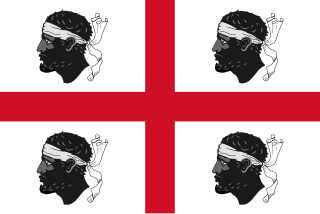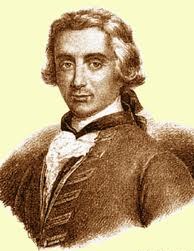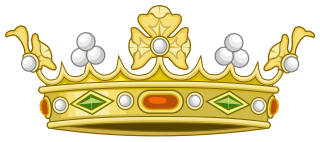Related Research Articles

Sardinian or sard is a Romance language spoken by the Sardinians on the Western Mediterranean island of Sardinia.

Archaeological evidence of prehistoric human settlement on the island of Sardinia is present in the form of nuraghes and other prehistoric monuments, which dot the land. The recorded history of Sardinia begins with its contacts with the various people who sought to dominate western Mediterranean trade in classical antiquity: Phoenicians, Punics and Romans. Initially under the political and economic alliance with the Phoenician cities, it was partly conquered by Carthage in the late 6th century BC and then entirely by Rome after the First Punic War. The island was included for centuries in the Roman province of Sardinia and Corsica, which would be incorporated into the diocese of Italia suburbicaria in 3rd and 7th centuries.

The Kingdom of Sardinia, also referred to as the Kingdom ofSardinia-Piedmont or Piedmont-Sardinia as a composite state during the Savoyard period, was a country in Southern Europe from the late 13th until the mid 19th century.

The Sardinians, or Sards, are a Romance language-speaking ethnic group native to Sardinia, from which the western Mediterranean island and autonomous region of Italy derives its name.

Vicente Bacallar y Sanna, 1st Marquess of San Felipe, later italianized into Vincenzo Bacallar Sanna, 6 February 1669 – The Hague (Netherlands), 11 June 1726). He was a Sardinian nobleman, military officer, linguist, historian, politician and ambassador of the Spanish Empire. He was born to a noble Sardinian family when the kingdom of Sardinia was part of the Spanish crown.

Marquess of San Felipe, is a hereditary title in the Peerage of Spain and Peerage of Sardinia, granted in 1709 by Philip V to Vicente Bacallar y Sanna, a Sardinian historian of Valencian origin who served as ambassador in the Spanish Netherlands and the Republic of Genoa

Sardinian nationalism or also Sardism is a social, cultural and political movement in Sardinia calling for the self-determination of the Sardinian people in a context of national devolution, further autonomy in Italy, or even outright independence from the latter. It also promotes the protection of the island's environment and the preservation of its cultural heritage.
Marquis of Villahermosa e Santa Croce is a title first granted in 1745 by Charles Emmanuel III, king of Sardinia to the Sardinian merchant Bernardino Antonio Genovès. It has passed afterwards to a branch of the house Manca, called Manca di Villahermosa since.
Marquis of Neoneli is a title granted in 1774 by Victor Amadeus III of Savoy, king of Sardinia, to Sardinian nobleman Pedro Ripoll. It has passed afterwards to the house Sanjust.
Marquis of San Sperate is a title granted in 1749 by Charles Emmanuel III of Savoy, king of Sardinia, to Sardinian judge and nobleman Joseph Cadello. It has passed afterwards to the house Ripoll and eventually to Sanjusts.
Marquess of Soleminis is a title granted in 1651 by Philip IV, king of Spain and king of Sardinia, to the Sardinian nobleman Francisco Angel Vico Sonza. It has passed afterwards to the house Amat.
Marquis of St. Charles is a title granted in 1754 by Charles Emmanuel III of Savoy, king of Sardinia, to Sardinian feudal Lord James Borro. It has passed afterwards to the house Palici and eventually to Cugias.

Pietro Amat di San Filippo was an Italian geographer, historian and bibliographer.

The Marquisate of Oristano was a marquisate of Sardinia that lasted from 1410 until 1478

The Byzantine age in Sardinian history conventionally begins with the island's reconquest by Justinian I in 534. This ended the Vandal dominion of the island after about 80 years. There was still a substantial continuity with the Roman phase at this time.
Duke of Vallombrosa was a title created for the House of Manca. The present holder is disputed.
Roberta Floris is an Italian journalist, television presenter and former model.
Francesco Cesare Casula is a Sardinian historian from Italy.

The Kingdom of Sardinia was a feudal state in Southern Europe created in the early 14th century and a possession of the Crown of Aragon first and then of the Spanish Empire until 1708, then of the Habsburgs until 1717, and then of the Spanish Empire again until 1720.
References
- ↑ F. Floris, Feudi, p. 594.
- ↑ According to the common genealogical use in Sardinia (and also legal use in Spain), Marquesses are indicated with both the father's and the mother's surnames, whatever the actual form in documents.
- ↑ In order to describe the spouses' houses, main titles of those houses are indicated, in the modern Italian form «of the [title]»
- ↑ Dates are different in different sources.